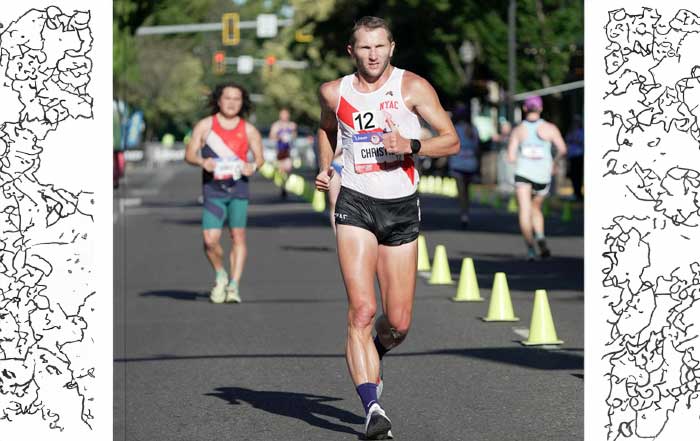In today’s globalized and highly competitive athletic landscape, the margin between victory and defeat is often razor-thin. Whether it’s elite marathoners in Kenya, rugby players in New Zealand, or Olympic gymnasts in the United States, one consistent and non-negotiable factor influencing success is nutrition. Athletes and sports organizations have moved far beyond traditional calorie-counting or protein-loading. Now, nutrition is treated as a science-backed strategy—an essential performance enhancer, recovery aid, and injury prevention tool.
As international athletic competition continues to intensify and evolve, so too does the scrutiny of what athletes eat, how they fuel their bodies, and when they consume their nutrients. With advances in sports science, biomarker tracking, and genetic testing, nutrition plans are now more personalized than ever. For sports organizations and performance-driven brands, nutrition has become a billion-dollar business—and for athletes, it remains a foundational element of peak performance.
🏃♂️ Athletic Nutrition Calculator
Nutrition Science as a Competitive Edge
The science of nutrition has matured from broad-based dietary recommendations into a fine-tuned system tailored to individual needs, sport-specific demands, and even climate conditions. Carbohydrates, once vilified, are now recognized for their crucial role in sustained endurance. Proteins are not just for muscle building—they also regulate hormonal balance and support immune function. Fats, especially omega-3 fatty acids, are recognized for their anti-inflammatory properties, which are essential in recovery protocols.
For professional sports teams, from the English Premier League to Major League Baseball, employing full-time dietitians and nutritionists is now standard. These professionals analyze blood panels, gut health, hydration levels, and more to build strategic dietary frameworks for each athlete. Even emerging sports nations are embracing this trend. In India, where cricket dominates, elite players are adopting nutrient timing and plant-based recovery diets for stamina and injury resilience.
Athletes like Novak Djokovic, Serena Williams, and Tom Brady have popularized their unique dietary regimens, sparking global interest in performance-based eating. Their personal chefs and wellness coaches are now integral to performance planning, helping bridge the gap between sports science and culinary execution.
Global Variations in Athletic Nutrition Strategies
The nutritional strategies athletes use often reflect regional preferences, available resources, and cultural attitudes toward food. In Japan, for instance, top-tier athletes frequently rely on fermented foods like miso, natto, and kimchi to boost gut health and immunity. In contrast, Nordic countries have embraced high-protein diets based on lean meats and oily fish like salmon and mackerel, offering both muscle-repair benefits and long-chain omega-3s.
In Sub-Saharan Africa, elite runners often rely on high-carbohydrate, low-fat diets composed of maize, beans, and vegetables. These diets, though humble, deliver essential energy while keeping weight low—an advantage in endurance events. Meanwhile, sports academies in Germany and Switzerland focus heavily on micronutrient optimization, emphasizing selenium, zinc, iron, and magnesium intake to enhance muscular efficiency and mental performance.
To understand these differences more deeply, visit the World section of FitPulseNews, where cultural and regional practices are frequently explored through the lens of sports science and health optimization.
Sports Supplements: Between Science and Marketing
The rise of sports supplements has transformed the way athletes across the globe approach pre-game preparation, intra-competition fueling, and post-competition recovery. Supplements such as creatine monohydrate, beta-alanine, branched-chain amino acids (BCAAs), and electrolyte gels have become part of a daily regimen for many athletes, amateur and professional alike.
The global sports nutrition market is forecasted to exceed $70 billion USD by 2028, driven by demand not just from professional athletes, but also from the growing number of recreational fitness enthusiasts. According to Statista and Grand View Research, consumer trust in certified, evidence-backed supplements is rising. However, experts warn against over-reliance or the use of unregulated products, particularly in countries with less stringent food safety oversight.
To understand the latest trends and risks in the supplement market, readers can explore related insights in the Business section of FitPulseNews, where discussions include partnerships between top brands and athletes as well as policy-level food regulation trends.
The Power of Personalized Nutrition and AI Integration
With the integration of artificial intelligence and wearable technology, athletic nutrition has become more data-driven than ever before. Companies like WHOOP, Oura, and Garmin collect biometric data to help athletes understand how their bodies respond to specific meals, training loads, and recovery routines. AI-powered nutrition platforms can now recommend exact meal compositions based on glucose spikes, inflammation markers, and sleep quality.
DNA testing is another frontier in personalized nutrition. Companies like InsideTracker and DNAfit offer athletes genetic insights that help them understand their predisposition to lactose intolerance, caffeine sensitivity, or injury risk. These insights are used to design precision diets that optimize macronutrient ratios and nutrient timing—tailored uniquely to each athlete's physiology.
Such technological synergy has become a game-changer in sports ranging from cycling to mixed martial arts, as competitors seek every legal and ethical advantage. You can learn more about the latest integrations of AI and wellness via the Technology section at FitPulseNews.
Hydration: The Forgotten Fuel
While food often takes center stage in athletic nutrition, hydration is just as critical. Water is involved in nearly every physiological function that affects performance—thermoregulation, joint lubrication, nutrient transport, and cellular function. Dehydration as little as 2% of body weight can significantly impair athletic performance, especially in endurance sports.
Elite athletes increasingly rely on precise hydration strategies that go beyond simply drinking water. Electrolyte balance—particularly sodium, potassium, calcium, and magnesium levels—are carefully monitored to prevent cramps, muscle fatigue, and heat exhaustion. Sweat testing, once reserved for research labs, is now widely used among professional teams in sports such as Formula 1, triathlons, and American football to customize hydration plans for individuals.
In hot climates such as Qatar or Australia, hydration becomes even more vital. High humidity environments increase fluid loss through sweat, and without proper electrolyte replacement, even the most conditioned athletes can succumb to heat-related illnesses. Organizations like the Gatorade Sports Science Institute and NCAA have developed hydration guidelines that are now applied globally.
To read more about environmental influences on performance, including hydration and climate adaptation, visit the Environment section of FitPulseNews, which covers how temperature and pollution affect health and athleticism.
The Rise of Plant-Based Nutrition in Sports
A seismic shift in sports nutrition over the past decade has been the growing adoption of plant-based diets among elite athletes. Once considered fringe, plant-based nutrition is now backed by robust scientific studies showing that it can support muscle repair, reduce inflammation, and enhance endurance. Athletes such as Lewis Hamilton, Venus Williams, and Scott Jurek have credited their performance longevity to plant-based eating.
This movement is being embraced not just for ethical or environmental reasons but because of the practical benefits it offers. Plant-based proteins like lentils, quinoa, and soy provide essential amino acids, while fruits, vegetables, nuts, and seeds deliver a powerhouse of antioxidants and anti-inflammatory compounds. Athletes on plant-forward diets report shorter recovery times, better digestion, and improved energy regulation.
Brands like No Cow, Huel, and Vega are innovating with vegan-friendly performance products, while large institutions such as the University of Oxford have contributed data demonstrating the cardiovascular and muscular benefits of plant-based diets in athletic populations.
Readers interested in food innovation and sustainable eating habits in sports can explore the latest updates in the Health section of FitPulseNews, which regularly features developments in sports nutrition and dietary science.
The Psychological Element of Eating for Performance
Beyond the physical, nutrition also plays a profound role in the psychological well-being of athletes. Food affects hormone levels, energy stability, cognitive function, and even mood regulation—factors that all influence training consistency and competitive performance. Serotonin, for example, is largely produced in the gut, and diets rich in fiber and probiotics can enhance mood and resilience.
Disordered eating remains a critical concern, particularly in weight-class sports like wrestling, boxing, and gymnastics. Athletes often struggle with body image pressure and restrictive eating, which can lead to Relative Energy Deficiency in Sport (RED-S)—a syndrome affecting both physical and mental health. Modern sports psychology increasingly intersects with nutritional counseling to build healthier, more sustainable relationships with food.
Many organizations, including The Female Athlete Project and NEDA, now advocate for integrated athlete care that considers the emotional and psychological components of nutrition. Promoting a balanced approach that aligns with performance goals without compromising mental health is now a top priority across many sports academies and national federations.
Visit the Culture section of FitPulseNews to understand how mental wellness, body positivity, and sports nutrition are co-evolving in today’s high-pressure athletic world.
Case Studies: Nutrition in Action Across Continents
United States: NFL and Precision Recovery Protocols
In the National Football League (NFL), recovery nutrition has reached new levels of sophistication. Post-game recovery stations are stocked with omega-3-rich salmon wraps, cherry juice for inflammation, and smoothies fortified with turmeric and collagen. Teams like the New England Patriots have invested in performance kitchens and use continuous glucose monitors (CGMs) to customize meals for energy and blood sugar stability.
United Kingdom: Premier League’s Nutrient Timing Revolution
In the English Premier League, clubs like Manchester City and Chelsea FC emphasize nutrient timing—consuming specific macronutrients at optimal times to maximize absorption and minimize fatigue. Players undergo DEXA scans, vitamin D testing, and microbiome analysis to fine-tune their diets. Nutritional protocols are even adjusted for away matches, considering changes in time zones, altitude, and local cuisine.
Germany: Youth Athlete Development Through Nutritional Education
Germany’s national sports development programs emphasize early education in nutrition. Young athletes in the German Football Association (DFB) are taught how to cook balanced meals, read food labels, and monitor hydration status. This long-term investment in dietary literacy is seen as essential for building sustainable athletic careers.
Australia: Environmental Adaptation and Anti-Inflammatory Foods
Given Australia’s intense climate and competitive surf and endurance sports scene, athletes are turning to foods like tart cherries, beetroot juice, and turmeric for natural inflammation control. National bodies such as the Australian Institute of Sport (AIS) lead research on how native foods like kangaroo meat and wattleseed affect energy metabolism and muscle adaptation.
Kenya and Ethiopia: Endurance Built on Simplicity
In East Africa, where the world’s most dominant long-distance runners train, the diet remains astonishingly simple—rooted in ugali (cornmeal), beans, and local vegetables. Though low-tech, these diets offer an ideal balance of energy, fiber, and anti-inflammatory properties. Combined with altitude training, they produce world-class endurance performance.
Canada: Ice Sports and Muscle Recovery Protocols
Canadian hockey players and figure skaters are prioritizing recovery nutrition with a heavy focus on omega-3 fats, magnesium, and protein-dense snacks like Greek yogurt and hemp seeds. National teams collaborate with Sport Canada and Canadian Sport Institute to test how seasonal variations affect metabolic rates and hydration needs in cold environments.
To explore more global developments and sports performance trends, readers can browse through the Sports section of FitPulseNews, which provides a worldwide snapshot of athletic innovation, including nutrition protocols and research.
The Economics Behind Sports Nutrition
The global sports nutrition industry is no longer limited to protein powders and energy bars. It has grown into a multi-billion-dollar economic engine, integrating health tech, consumer goods, personalized wellness services, and professional performance management. According to Market Research Future, the global market size is projected to exceed $80 billion USD by 2030, fueled by rising health consciousness, increased gym memberships, and digital sports platforms.
Multinational corporations like Nestlé Health Science, Abbott Nutrition, and PepsiCo (which owns Gatorade) are investing heavily in research, acquisitions, and product development to maintain their dominance. Meanwhile, agile startups in the United Kingdom, Sweden, and the United States are disrupting the space with innovative, plant-based, or AI-driven solutions.
In parallel, sports leagues and clubs are monetizing nutrition more directly. Teams now partner with supplement brands to develop custom products and distribute branded nutrition content across social platforms. These partnerships create new revenue streams while enhancing fan engagement and athlete branding.
The Business section of FitPulseNews regularly covers such industry shifts, mergers, investments, and partnerships, offering analysis on how nutrition innovation is reshaping the sports ecosystem.
Regulatory Landscape and Supplement Safety
As the industry expands, so too does the challenge of regulation. Sports nutrition occupies a grey zone between food and pharmaceuticals, and oversight varies dramatically by country. In the European Union, stringent EFSA (European Food Safety Authority) regulations require robust evidence for health claims. In contrast, the United States relies on the FDA’s Dietary Supplement Health and Education Act (DSHEA), which imposes less pre-market scrutiny, creating opportunities for questionable products to enter the market.
Anti-doping regulations also come into play. Athletes must ensure that supplements are free from banned substances listed by the World Anti-Doping Agency (WADA). High-profile cases of accidental doping due to contaminated supplements have prompted the rise of certification programs like NSF Certified for Sport and Informed Sport, which independently test products for safety and compliance.
Consumers and professionals alike must navigate a complex web of trust, transparency, and scientific validation. To explore how regulatory shifts are shaping sports and wellness markets, readers can turn to the News section of FitPulseNews, where policy updates and safety alerts are tracked in real time.
Startups Disrupting the Space
Innovative startups are playing a crucial role in transforming how athletes think about and interact with food. Companies like NutriSense, Levels, and Fuelin use continuous glucose monitors (CGMs) and algorithmic models to deliver real-time insights into blood sugar responses, allowing endurance athletes to plan meals and snacks with unprecedented accuracy.
Meanwhile, biotech startups are developing lab-grown protein and cellular meat, hoping to provide clean, consistent nutrition with minimal environmental impact. Companies like Future Farm and Perfect Day are creating athlete-focused products that meet performance needs without sacrificing sustainability.
Subscription models are also on the rise. Personalized meal prep kits, DNA-informed supplement packs, and nutrient delivery systems are being tailored for specific sports, age groups, and performance goals. These models combine convenience, customization, and expert guidance—three pillars that appeal to modern athletes.
The Technology section of FitPulseNews provides ongoing coverage of these groundbreaking solutions, offering readers a glimpse into the future of food, health tracking, and digital performance platforms.
Challenges in Low-Income and Developing Regions
Despite rapid global growth, access to performance-grade nutrition remains unequal. Athletes in low-income countries, especially in parts of Africa, South America, and South Asia, often lack the infrastructure, education, or financial means to follow optimized nutrition plans. Many must rely on local staples, seasonal produce, and improvisation.
International federations like World Athletics and FIFA, along with NGOs, are investing in athlete development programs that include nutritional education and food access. There is a growing emphasis on community-based solutions, including school-based meal programs and local sourcing of high-nutrient crops such as quinoa, chickpeas, and moringa.
The sustainability aspect is also critical. Organizations are integrating eco-friendly food production with nutrition outreach—an area explored in-depth within the Environment section of FitPulseNews, which evaluates nutrition's ecological footprint and role in sports development.
The Future of Sports Nutrition
Looking ahead, the future of athletic nutrition will be shaped by five primary forces:
Hyper-Personalization: With more granular data from wearables, apps, and diagnostics, athletes will receive daily, even hourly, nutrition adjustments based on their biometric state.
Sustainable Nutrition: As climate change reshapes food production, athletes and organizations will demand low-carbon, resource-efficient food systems. Expect more plant-forward, climate-smart menus.
Integration with Mental Health: Nutrition will be increasingly recognized not just for physical recovery, but for cognitive and emotional regulation—especially under high-performance stress.
Global Collaboration: Research partnerships between nations, especially in regions with emerging sports talent, will allow for broader knowledge transfer and inclusive progress.
Regulatory Evolution: Governments and sports bodies will modernize oversight frameworks to reflect new technologies, consumer behaviors, and the blurred lines between food, supplement, and medicine.
To stay informed about where athletic performance, nutrition, and innovation intersect, readers can visit the About section of FitPulseNews, which outlines the platform’s mission to deliver authoritative insights across health, sports, business, and technology.
Expert Voices: What Leading Professionals Are Saying
Across disciplines, thought leaders in sports science, medicine, and nutrition continue to emphasize that no singular diet fits all, and that context, customization, and consistency are key to unlocking peak performance.
Dr. Louise Burke, former head of nutrition at the Australian Institute of Sport, has repeatedly highlighted the importance of “nutrition periodization,” where food intake varies based on training cycles, competitive calendars, and individual responses. She asserts that matching nutrition to exercise load is more effective than relying on fixed daily macros.
Dr. Asker Jeukendrup, a performance nutritionist who has worked with FC Barcelona, Team INEOS, and British Olympic teams, emphasizes that carbohydrate fueling during endurance events remains one of the most researched and validated performance enhancers—though often underused by amateur athletes.
Nancy Clark, author of the widely cited Sports Nutrition Guidebook, advocates for a holistic approach that includes intuitive eating, balanced hydration, and food enjoyment. Her philosophy resonates deeply with younger athletes, especially those balancing sports with academic and social demands.
Meanwhile, sports psychologists like Dr. Karla Steingraber are increasingly involved in conversations about food relationships, highlighting the mental strain of restrictive dieting, orthorexia, and supplement dependence. According to Steingraber, fueling without guilt is now seen as an integral component of sustainable high performance.
These insights point to a shared conclusion: nutrition is not merely fuel, but strategy—one that encompasses biology, emotion, culture, and science.
Action Points for Athletes, Brands, and Institutions
For athletes—whether elite professionals or weekend warriors—the action is clear: treat nutrition as an evolving and personalized science. Invest time in understanding your body’s needs, work with certified experts, and avoid one-size-fits-all diets popularized on social media. Explore tools like glucose monitoring, gut microbiome testing, and nutrient tracking apps to build better habits rooted in evidence.
For sports organizations and educational institutions, it's time to embed nutrition deeper into coaching frameworks and youth development pipelines. Meal education, cooking skills, and supplement safety should be taught alongside strength training and game tactics.
Brands, on the other hand, face both opportunity and responsibility. The demand for performance-focused, sustainable, and transparent nutrition products is growing, and companies that combine ethical sourcing, clean formulations, and data-backed claims will win the trust of athletes and consumers alike. However, greenwashing and overmarketing of supplements must be avoided.
And finally, governments and global institutions must improve access to high-quality nutrition. Policies should support nutritional equity, fund performance research, and enforce stricter regulations on mislabeled or contaminated products that could jeopardize careers and health.
Nutrition as the Foundation of Global Athleticism
In 2025, as sports become faster, more globalized, and increasingly data-driven, nutrition has emerged as a universal equalizer—a lever of performance that transcends borders, income levels, and sporting disciplines. Whether it’s a tennis match in Paris, a weightlifting session in Toronto, or a football camp in Nairobi, the food on an athlete’s plate shapes more than muscles; it defines outcomes, careers, and even cultural narratives.
FitPulseNews remains committed to delivering world-class reporting at the intersection of nutrition, fitness, sports, and science. For the latest in performance breakthroughs, wellness technology, and industry updates, explore our growing platform:
The global athletic community stands at the edge of a new era—one where smarter nutrition decisions are not just fueling bodies, but transforming the very nature of competition itself. In this landscape, the real winners will be those who nourish with intent, recover with purpose, and eat for more than performance—but for longevity, resilience, and power.








